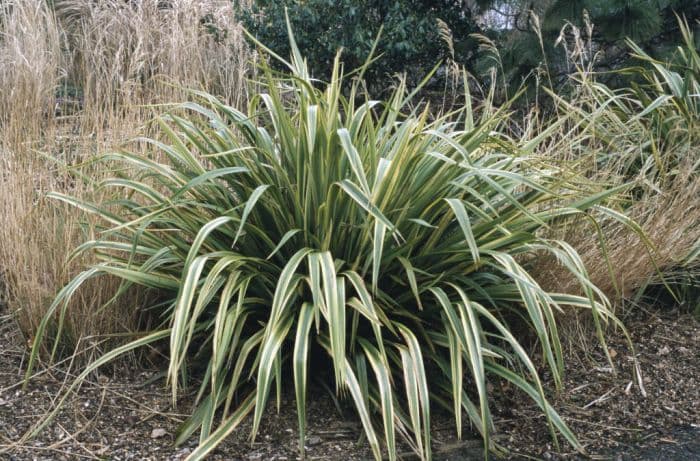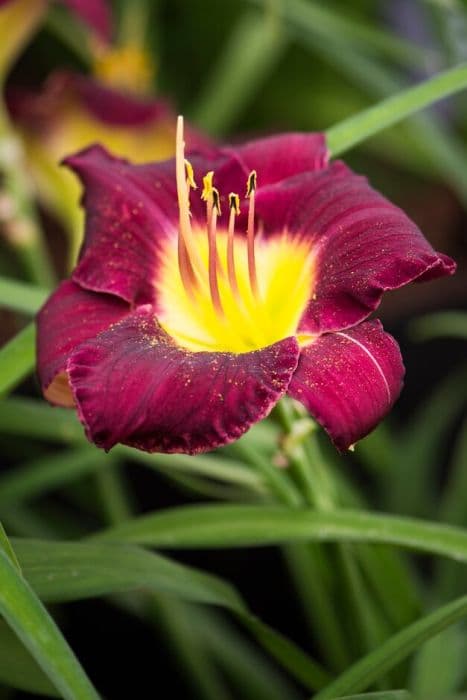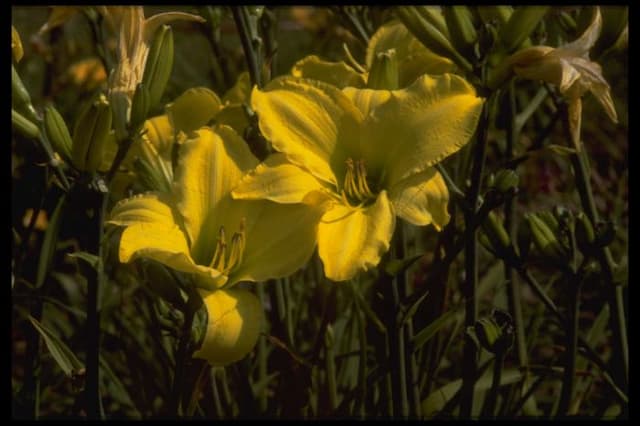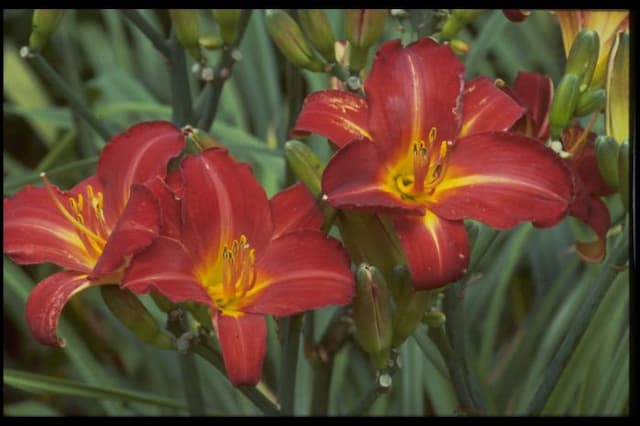New Zealand Flax Phormium 'Duet' (v)

ABOUT
Phormium 'Duet', commonly known as the variegated New Zealand flax, is a visually striking plant. Its leaves are its most distinctive feature, long and sword-shaped, arching gracefully from the base of the plant. The foliage has a bold, cream-colored variegation along the margins and a deep green color in the center, creating a vivid contrast that makes the variegation stand out. This two-toned effect adds a bright and colorful accent to any garden space. The texture of the leaves is leathery and they can have a slightly glaucous or waxy appearance. Though the plant does bloom, flowers are generally not the focal point; it's the variegated leaves that are the main attraction of the variegated New Zealand flax.
About this plant
 Names
NamesFamily
Asphodelaceae
Synonyms
New Zealand Flax, Variegated New Zealand Flax, Duet New Zealand Flax
Common names
Phormium 'Duet'
 Toxicity
ToxicityTo humans
The Phormium 'Duet', commonly known as New Zealand Flax, is not toxic to humans. Therefore, ingesting it typically does not produce any symptoms of poisoning or result in harmful consequences.
To pets
New Zealand Flax is generally considered non-toxic to pets. It should not cause any severe symptoms of poisoning if ingested by animals such as cats or dogs. However, like with any non-food plants, ingestion may potentially result in mild gastrointestinal upset due to the fibrous nature of the plant.
 Characteristics
CharacteristicsLife cycle
Perennials
Foliage type
Evergreen
Color of leaves
Variegated
Flower color
Mixed
Height
2-3 feet (0.6-0.9 meters)
Spread
2-3 feet (0.6-0.9 meters)
Plant type
Shrub
Hardiness zones
8-11
Native area
New Zealand
Benefits
 General Benefits
General Benefits- Ornamental Appeal: Phormium 'Duet' adds aesthetic value with its variegated foliage, providing an attractive contrast in gardens and landscapes.
- Low Maintenance: This plant is known for its minimal upkeep requirements, making it suitable for gardeners of all skill levels.
- Drought Tolerance: Once established, Phormium 'Duet' can withstand periods of low water, which is beneficial in dry climate areas or for water-wise gardens.
- Pest Resistance: It is generally resistant to pests, reducing the need for chemical treatments in the garden.
- Architectural Structure: With its upright, sword-like leaves, it provides an excellent architectural presence in garden designs.
- Year-Round Interest: The evergreen nature of Phormium 'Duet' ensures that it provides color and form in the garden throughout the year.
- Versatility: It is versatile and can be used in a variety of garden settings, including borders, pots, and as an accent plant.
- Coastal Suitability: This variety is particularly suitable for coastal gardens as it can withstand salty winds and sprays.
 Medical Properties
Medical PropertiesThis plant is not used for medical purposes.
 Air-purifying Qualities
Air-purifying QualitiesThis plant is not specifically known for air purifying qualities.
 Other Uses
Other Uses- Flax 'Duet' fibers are strong and have been traditionally used for making twine and rope.
- The strap-like leaves can be woven into baskets and other handicrafts by those skilled in the art of weaving.
- As a tough, evergreen plant, Flax 'Duet' can be used as a windbreak in coastal and exposed garden areas.
- The plant can be planted in mass to control erosion on slopes due to its dense root system.
- Its colorful leaves can be used in floristry as a long-lasting foliage addition to flower arrangements.
- Flax 'Duet' can serve as a habitat plant for garden faunas such as birds and insects, providing shelter and food sources.
- Some cultures use the dried leaves of this flax for ceremonial and decorative purposes, such as in traditional dances and adornments.
- The contrasting variegation of the Flax 'Duet' leaves can be used to create pattern and interest in garden design, especially in modern or contemporary landscapes.
- Used in educational settings, such as schools or botanical gardens, to teach about plant variegation and the cultivation of ornamental flax varieties.
- Can be used in noise reduction strategies in gardens situated near traffic or industrial areas, as the dense foliage can help absorb sound.
Interesting Facts
 Feng Shui
Feng ShuiThe New Zealand Flax is not used in Feng Shui practice.
 Zodiac Sign Compitability
Zodiac Sign CompitabilityThe New Zealand Flax is not used in astrology practice.
 Plant Symbolism
Plant Symbolism- Versatility: Variegated flax is known for adapting to different conditions, symbolizing flexibility and the ability to thrive in diverse environments.
- Endurance: This plant's toughness and ability to withstand harsh conditions reflect attributes of resilience and persistence.
- Uniqueness: The distinctive striped leaves of variegated flax symbolize individuality and the beauty in being different.
- Harmony: The balanced variegation of the 'Duet' variety suggests a sense of equilibrium and the importance of living in harmony with one's surroundings.
 Water
WaterNew Zealand Flax prefers consistent moisture, though it is somewhat drought-tolerant once established. Ideally, water the plant deeply once a week, providing about one to two gallons per watering session, depending on the size of the plant and the weather conditions. In the hotter summer months, you may need to water more frequently, particularly if the plant is in a container. During winter or in cooler climates, reduce watering to every other week or less frequently, ensuring that the soil doesn't become waterlogged. It's essential to check the top inch of the soil for dryness before watering again.
 Light
LightNew Zealand Flax thrives in full sun to partial shade. The best spot for the plant is an area that receives at least six hours of sunlight daily, although it can tolerate some light shade. Too much shade may result in decreased vigor and less intense foliage color, so opt for a brighter location when possible to encourage robust growth.
 Temperature
TemperatureNew Zealand Flax can tolerate a wide range of temperatures, but it grows best when the temperature is between 65°F and 75°F. It can survive temperatures as low as 20°F but may sustain damage if exposed to such cold for extended periods. Protect the plant from frost to prevent damage to the leaves, and ensure it's in a location that doesn't drop below the minimum temperature.
 Pruning
PruningPruning New Zealand Flax is primarily done for aesthetic reasons and to remove old or damaged leaves. Trim away any foliage that is dead, damaged, or discolored to keep the plant looking neat and to encourage new growth. The best time for pruning is in early spring before new growth starts. Pruning is not required often—usually just once a year to maintain its shape and health.
 Cleaning
CleaningAs needed
 Soil
SoilNew Zealand Flax prefers a rich, well-draining soil mix with a pH between 5.5 and 6.5. To create an optimal soil mix, combine two parts garden soil, one part peat moss or coco coir, and one part perlite or pumice for aeration. Ensure ample organic matter to retain moisture while allowing excess water to drain to prevent root rot. Regularly amending the soil with compost can be beneficial as well.
 Repotting
RepottingNew Zealand Flax should be repotted every 2 to 3 years, or when it becomes root-bound. Spring is the ideal time to repot to allow the plant to recover during the growing season. Use the opportunity to divide clumps if the plant has become too large. Always choose a pot that is slightly larger than the current one to provide space for growth.
 Humidity & Misting
Humidity & MistingNew Zealand Flax tolerates a wide range of humidity levels and is quite adaptable to different indoor environments. It does well in average room humidity, but like with most plants, avoid placing it in excessively dry conditions without occasional misting. This robust plant can also handle coastal conditions well if grown outdoors.
 Suitable locations
Suitable locationsIndoor
Provide bright light, minimal water, and drainage for indoor New Zealand Flax.
Outdoor
Plant in full sun to part shade; well-draining soil; shelter from wind.
Hardiness zone
8-11 USDA
 Life cycle
Life cycleThe life of the Phormium 'Duet', commonly known as New Zealand Flax, begins with seed germination, which occurs in warm, moist soil conditions. Seedlings emerge and develop into juvenile plants, characterized by smaller versions of the adult plant's arching, variegated leaves. As the plant matures, it forms a clump with dense foliage, reaching its full size where it displays its striking green and creamy yellow striped leaves, and it becomes more tolerant to a range of climatic conditions. During the growing season, occasionally the mature New Zealand Flax may send up a tall flower spike with tubular flowers that can attract birds and insects. After the flowering stage, seeds are produced and dispersed, allowing for new plants to begin the cycle if conditions permit. Old leaves die back over time and can be removed to maintain plant vigor and appearance.
 Propogation
PropogationPropogation time
Spring to early summer
Propogation: The New Zealand Flax 'Duet', known for its distinctive variegated leaves, can be effectively propagated during the spring or early summer when the plant is actively growing. The most popular method of propagation for this plant is division. This involves carefully lifting the parent plant from the ground and using a sharp knife or spade to divide the clump into smaller sections, ensuring that each new section has a portion of the root system intact. Once divided, the new plants can then be replanted into well-draining soil, watering them thoroughly to establish. This simple vegetative method maintains the variegated characteristics of the 'Duet' variety, as each division is a direct clone of the parent plant.









